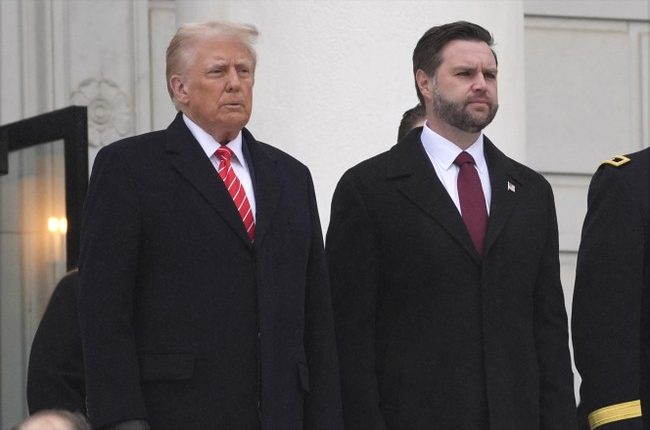
As Ed wrote earlier today, there’s some level of confidence that the US strike on Fordow succeeded in destroying the underground lab where Iran was using centrifuges to enrich uranium. We won’t know for certain for a long time because at the moment no one can get to Fordow to inspect whether anything is left, but there’s a decent chance the lab is gone.
However, shortly after the strike, a news site in Iran claimed that much of the enriched uranium Iran had stored at the site had been moved somewhere else.
Following President Donald Trump’s statement that the U.S. Air Force “obliterated” Iranian nuclear sites on Sunday, Tehran’s state-run Mehr news agency reported that the enriched uranium at the Fordow site had been moved elsewhere beforehand.
“Most of the uranium that was previously stored at the Fordow enrichment facility has been moved to another location,” Mehr reported, citing an unnamed Iranian source…
A report leaked earlier this month by the Vienna-based International Atomic Energy Agency said that as of May 17, Iran had amassed 408.6 kilograms (900.8 pounds) of uranium enriched up to 60%. That enriched material is a short, technical step away from weapons-grade levels of 90%, according to experts.
Is there reason to think the stockpile might have been moved prior to the strike? The answer appears to be yes. First, several news outlets are citing these comments from J.D. Vance on ABC’s This Week yesterday.
“Iran having a nuclear weapon — nuclear proliferation in the Middle East — is a disaster for pretty much everybody. It’s one of the few issues where Russia, China and the United States have broad agreement,” Vice Pres. JD Vance told @JonKarl. pic.twitter.com/QEssDlIBp5
— This Week (@ThisWeekABC) June 22, 2025
Also, Israeli intelligence suggests they may have moved some of the material just prior to the strike.
The Israeli military’s initial analysis concluded that the site, the target of American and Israeli military planners for more than 26 years, sustained serious damage from the strike but had not been completely destroyed.
But there was also evidence, according to two Israeli officials with knowledge of the intelligence, that Iran had moved equipment and uranium from the site in recent days. And there was growing evidence that the Iranians, attuned to Mr. Trump’s repeated threats to take military action, had removed 400 kilograms, or roughly 880 pounds, of uranium enriched to 60 percent purity. That is just below the 90 percent that is usually used in nuclear weapons.
The 60-percent enriched fuel had been stored deep inside another nuclear complex, near the ancient capital of Isfahan. Rafael Mariano Grossi, the director general of the International Atomic Energy Agency, said by text that the fuel had last been seen by his teams of United Nations inspectors about a week before Israel began its attacks on Iran. In an interview on CNN on Sunday he added that “Iran has made no secret that they have protected this material.”
Asked by text later in the day whether he meant that the fuel stockpile — which is stored in special casks small enough to fit in the trunks of about 10 cars — had been moved, he replied, “I do.” That appeared to be the mystery about the fuel’s fate that Mr. Vance was discussing.
So the enriched uranium wasn’t at Fordow, but Sec. of State Rubio suggested our strikes on Isfahan may have destroyed the stockpile.
In an interview on NBC’s “Meet the Press,” Rubio says that, while “no one will know for sure for days,” he doubts that Iran’s uranium stockpile was relocated before the operation.
“I doubt they moved it… they can’t move anything right now inside of Iran. I mean, the minute a truck starts driving somewhere, the Israelis have seen it, and they’ve targeted it and taken it out. So our assessment is, we have to assume that that’s a lot of 60% enriched uranium buried deep under the ground there in Isfahan,” he says.
“That really is the key,” adds Rubio, saying Iran should now “bring [the stockpile] out of the ground and turn it over. Multiple countries around the world will take it and down blend it. That’s what they should do with that.”
As for Fordow, satellite images show a line of trucks at the entrance just prior to the bombing.
The images, released by US defense contractor Maxar Technologies, captured more than a dozen cargo-style trucks lined up outside the Fordow nuclear enrichment site’s tunnel entrance on Thursday and Friday.
The vehicles, which came and went over a 24-hour stretch, appeared to move unidentified contents roughly half a mile away, the Free Press reported, citing US officials.
US and Israeli intelligence officials were aware of the movement at the time but opted not to act so they could track where the trucks headed and await President Trump’s order to carry out the strikes, the officials added.
So what does all this mean? Well, never underestimate the capacity of the Iranians to lie, but it does appear based on the images that they got something out of Fordow before the strikes. As for the 900 pounds of enriched uranium, that would have been relatively easy to move but presumably we (the US and Israel) were watching any efforts to move it. However, J.D. Vance’s comments do suggest we don’t have any real certainty about where that enriched uranium is at the moment. Maybe it was trapped underground at Isfahan as Sec. Rubio suggests or maybe not.
Even if Iran did get it out in time, they probably can’t do much with it unless they have a new site with advanced centrifuges to enrich it further. Even if some portion of Fordow survived, it could be a long time before they can get it running again.
What is not going to happen is Iran agreeing to hand over anything they managed to salvage. Iran has been playing this game for many years and while this is clearly a major setback in their plan to build a bomb, they won’t stop.
Ronen Solomon, an Israeli intelligence analyst, told The Telegraph that even if Iran had moved its uranium, it would be “like having fuel without a car”, adding: “They have the uranium, but they can’t do a lot with it, unless they have built something we don’t know about on a small scale.”
Ali Shamkhani, an adviser to the supreme leader, said: “Even assuming the complete destruction of the sites, the game is not over, because enriched materials, indigenous knowledge, and political will remain intact.”
Finally, an Israel reporter says his understanding is that the enriched uranium is buried. So not certainty but another conflicting report. He also notes that Israel bombed the entrance road to Fordow to keep the IRGC from getting in. So it may be a while before anyone really knows if the enriched uranium was buried in the bombing or moved just prior to it.
The best-informed journalist in Israel says Israel believes i) all the centrifuges have been hit; and ii) the highly enriched uranium was not moved and has been buried deep underneath Fordow and Natanz by bombs.
That would mean the strikes were an immense success. https://t.co/UgCsTrGCcE
— Elliot Kaufman (@ElliotKaufman6) June 23, 2025







